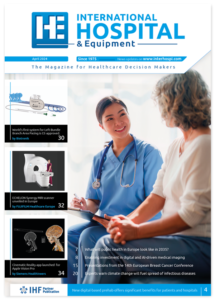New MRI analysis useful in predicting stroke complications caused by clot-busters
Johns Hopkins researchers have developed a new way of looking at standard MRI scans that more accurately measures damage to the blood-brain barrier in stroke victims, a process they hope will lead to safer, more individualised treatment of blood clots in the brain and better outcomes.
The blood-brain barrier is a unique shielding of blood vessels that limits the passage of molecules from the blood stream into the brain. Without it, the brain is open to infection, inflammation and haemorrhage. Ischemic stroke patients are at risk of bleeding into the brain when there is damage to the barrier. By more accurately identifying areas of damage, the researchers say they hope to use their new tool to predict and reduce the risk of complications from clot-dissolving drugs used to treat this kind of stroke.
‘A better characterisation of blood-brain barrier damage opens the door to new approaches to treating stroke patients,’ says study leader Richard Leigh, M.D., an assistant professor of neurology and radiology at the Johns Hopkins University School of Medicine. ‘We want to help patients, but we need to make sure our treatments don

